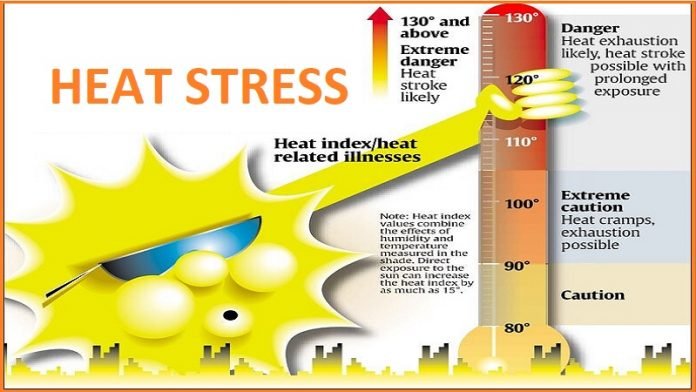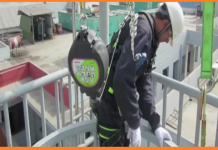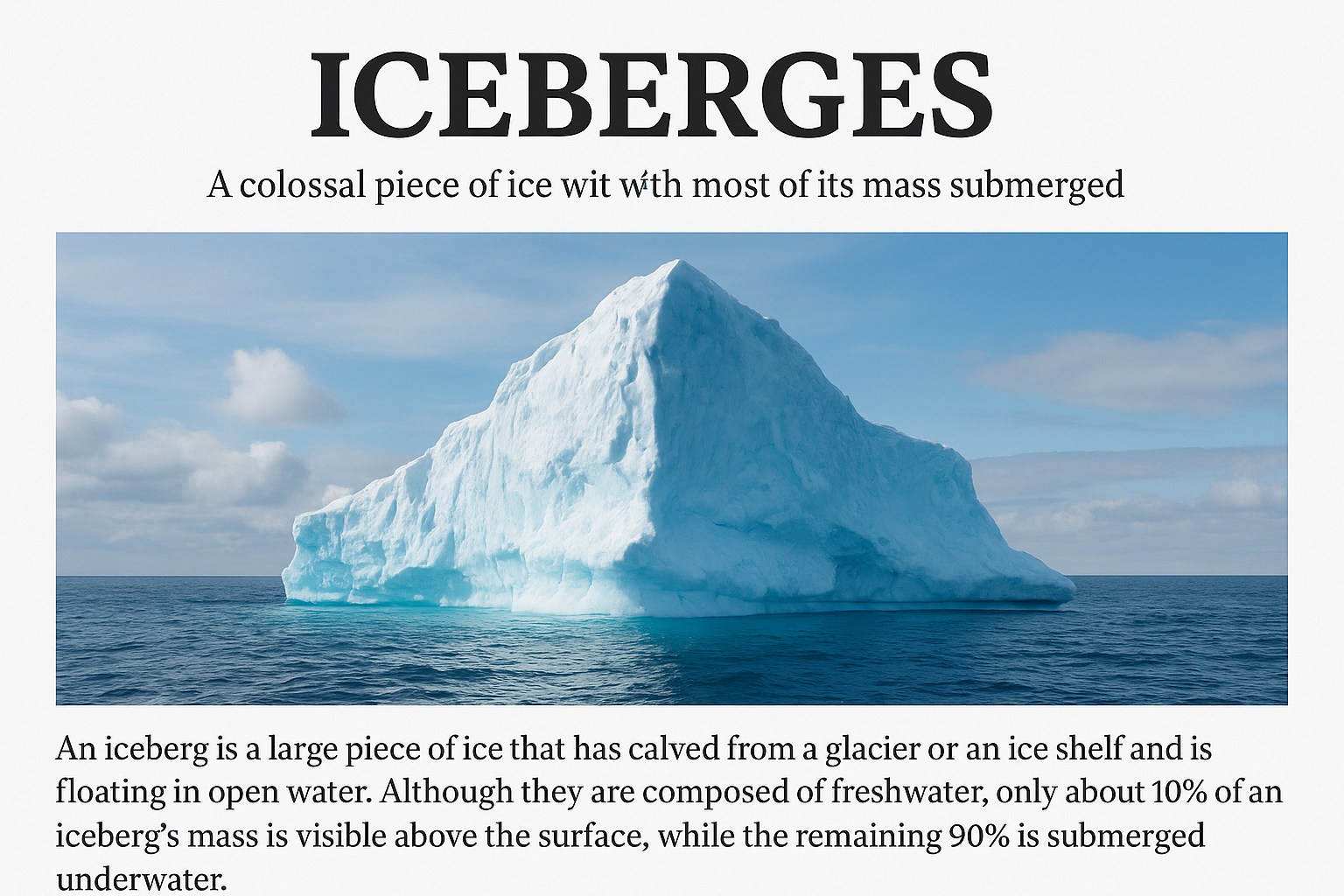There are numerous factors influencing the heat and cold level of the work environment
- Air temperature
- Air humidity
- Radiant heat
- Air movement
- Duration of exposure
- Type of clothing and protective equipment
- Type of work being performed
- Nature of work/rest regime
- Level of the physical effort involved
- Age and health status of the individual worker
- Degree of acclimatization of the individual worker.
HEAT EXCHANGE BETWEEN MAN AND ENVIRONMENT
M ± R ± C ± K – E = ± S
- M is Metabolic heat production,
- R is Radiant heat,
- C is Convective heat,
- K is Conductive heat,
- E is evaporative heat loss,
- S is the net gain or loss of heat by the body.
Metabolic Heat of the body is usually expressed in terms of heat liberation (KCal/Hr) resulting from continuously occurring chemical reactions at the cellular level. This heat varies substantially and is proportional to the intensity of work being performed by the body.
Radiant Heat is released continuously from the surfaces at higher temperatures to the objects in the environment at a lower temperature. The radiant heat from sun and other hot objects is not appreciably absorbed by the air and absorbed on the objects on which it impinges. The distance of the hot objects and the difference of the temperatures are the most important factors affecting the radiant heat.
Convective Heat represents exchange of heat at the surface of the skin by means of air coming in contact and giving or taking heat. The convective heat depends upon the complex mechanism of giving or taking heat based on the difference in the temperature, extent of air movement and the extent to which the air is able to penetrate the skin.
Conductive Heat is the heat lost or gained due to direct physical contact of the skin with hot or cold objects. The degree of heat exchange by this route is dependent on the difference in temperature between the skin and the object concerned.
Evaporative Heat is the heat lost from the skin by means of evaporation of the sweat.
The extent of this loss depends upon the air temperature, air movement, and the humidity of air. The sweat is released on the skin as per the requirement of the thermal conditions though only up to a certain limit and depending upon the degree of acclimatization.
HEAT-INDUCED
- Occupational illnesses.
- Injuries.
- Reduced productivity.
Contents
Heat Stroke:
Heatstroke is a state of thermoregulatory failure, clinically characterized by hot and dry skin (red mottled or cyanotic) and rapidly rising body temperature (Hyperthermia). When the body core temperature reaches 41.1°C (106°F), the danger of the heat stroke becomes imminent and delirium, collapse and loss of consciousness will occur. Continued increase in core temperature will lead to cell damage and additional brain disorders, including convulsions and coma. The heat stroke may become fatal if immediate treatment is not given.
Heat Exhaustion:
Heat exhaustion is characterised by a sticky and moist skin, weakness or extreme fatigue, anorexia, nausea, vomiting, headache, giddiness and muscle cramps. Core temperature is not increased significantly. The cause of heat exhaustion is reduction in blood volume due to excessive sweating and insufficient replacement of water or salt. The blood supply to the brain becomes inadequate in this case due to excessive demand of blood in the peripheral blood vessels.
Heat Cramps:
The painful spasms in one or more skeletal muscles is characteristic of heat cramps. This happens when the sodium chloride level falls below a critical level. This condition arises when a person loses too much of sweat without adequate replenishment of the salt. The cramps can be readily alleviated by increased intake of salt and rest in cool place.
Heat Hyperpyrexia:
Heat hyperpyrexia is the result of partial failure of the sweating mechanism. The symptoms are similar to the heat stroke but are milder. Symptoms are similar to hat observed in the initial stages of heat stroke and treatment is also similar but of less drastic. Rise in core temperature and brain damage are comparatively less in this case.
Heat Syncope:
Heat syncope is sudden fainting of the person due to excessive accumulation of the blood in the peripheral vessels in order to dissipate the heat and subsequent deficiency in blood supply to the brain. The conditions are similar to heat exhaustion but it happens suddenly even in the absence of exertion. Moving the victim to a cool area is generally sufficient treatment for this condition.
Heat rash or prickly heat:
Heat rash or prickly heat results due to prolonged bathing of some part of the skin to the un-evaporated sweat It happens as a result of clogging of sweat gland ducts and is characterized by retention of sweat and an inflammatory topical reaction. It is observable as profuse , blister like, tiny raised red vesicles. The affected feel prickling sensations on exposure to heat. Skin cleanliness is important to prevent infections. Heat rash can be minimized by frequent rest in cool areas for allowing the skin to get dry. Drying lotions are also used to keep the skin dry.
PSYCHROMTRIC CHART

Estimating Energy Cost by Task Analysis
| A. Body position and movement | Kcal/ min |
| Sitting | 0.3 |
| Standing | 0.6 |
| Walking | 2.0-3.0 |
| Walking uphill | Add 0.8/ meter rise |
| Type of Work | Average | Range Kcal/ min | |
| B. | Hand work —— light Heavy | 0.4 0.9 | 0.2 —– 1.2 |
| Work one arm ——– light Heavy | 1.0 1.8 | 0.7 —— 2.5 | |
| Work both arm ——– light Heavy | 1.5 2.5 | 1.0 ——- 3.5 | |
| Work whole body ——– light moderate heavy very heavy | 3.5 5.0 7.0 9.0 | 2.5 ——– 9.0 | |
| C. | Basal metabolism | 1.0 | |
| D. | Sample calculation Assembling work with heavy hand tools Standing Two–arm work Basal metabolism Total | 0.6 3.5 1.0 5.1 Kcal/min |
Effective Temperature (ET) Index was developed empirically by exposing a large number of subjects to various combinations of temperature, air movement and relative humidity and developing a nomogram as an index of discomfort. This index has found a wide spread use in comfort ventilation engineering ( air condition). For use of this index in occupational environments there several problems including absence of radiant heat, and metabolic heat components in it.
Corrected Effective Temperature (CET) Index is a modified effective temperature index in which, the air temperature has been replaced by globe temperature to incorporate the influence of radiant heat in the index. Limitations of no consideration for nature of work ( affecting metabolic heat) and type of clothing etc. are still present in this index. This index had been widely used in India for evaluation of thermal stress in industries.
PRIMARY FUNCTION OF THE VENTILATION SYSTEM
To prevent the acute discomfort or possible injury of those working in or generally occupying a designated hot industrial environment.
Anhidrotic Heat Exhaustion: Anhidrotic Heat exhaustion is characterised by onset of numerous discrete vesicles in the skin of trunk and proximal parts of the limbs, usually preceded by some form of trauma such as heat rash or sun burn.
The condition causes sweat retention in the skin leading to reduced heat loss by evaporative cooling and heat intolerance. The disease occurs in persons who are exposed to humid hot conditions for several months. If the cases are not complicated the rest in cool places is a sufficient remedy.
Behavioural Fatigue: Heat exposure can also lead to transient and chronic behavioural disorder. Sudden change of ambient conditions to hot environment can cause a transient impairment of skilled sensorimotor, mental or vigilance tasks. Proper acclimatisation can minimise the occurrence of this form of transient fatigue.
Heat Stress CheckList
Factors to be considered in heat stress assessment at (company) sites:
| Item | Question | Yes | No |
| Outdoor work; For work conducted at a fixed location (e.g. bar-bending, trench digging, constructing a shaft, attending a drilling rig). | Is sunshade set up at these locations to block away the sunlight? | ||
| Are blowers or fans used, as appropriate, to enhance air movement at these locations to facilitate cooling of the workers? | |||
| For mobile work (e.g. bar-fixing, concreting, leveling). | Are workers provided with light-coloured safety helmets with wide-brim or flaps to block out the sunlight? | ||
| Is a sheltered resting place set up within a short distance from each working location? | |||
| In Case of Very Hot Weather Warning, High Humidity or High UV Level | Are administrative control measures (e.g. rescheduling outdoor work to cooler periods during daytime, and arranging job rotation or suitable rest breaks) taken, where reasonably practicable, to avoid prolonged working in a hot environment? | ||
| Is cool drinking water provided and readily accessible to workers? | |||
| Are workers reminded to take plenty of water and stay alert of their own physical conditions? | |||
| Heat-generating Machinery | Is heat-generating machinery (e.g. diesel air compressors or generators) kept away from workers so far as reasonably practicable? | ||
| Working at Poorly-ventilated Areas | Are blowers or fans used to increase air flow in poorly ventilated areas (e.g. shafts, underground pipes, enclosed workrooms)? | ||
| Performing heavy manual work | Are mechanical aids provided or powered lifting machinery used, as appropriate, to minimize physical exertion? | ||
| Is the work reorganized to minimize intensity and pace of bodily movement of workers so far as reasonably practicable? | |||
| Are suitable rest breaks (or job rotation) arranged for workers? | |||
| Provision of drinking water on site | Is sufficient potable drinking water provided on-site? | ||
| Is the drinking water provided at locations within proximity to all workers? | |||
| Clothing | Do the workers wear thin and air-permeable clothing? |






Subject terminology is fine. Subject knowledge showing perfect ground reality.
Excellent Information for all Safety Engineers who are dealing with Steel Industry and other industries dealing with extreme heat.
Excellent Job carried out which will be useful for all Safety Officers in particular new entrants and line Managers.
HSE Consultant and Auditor, ISO Consultant, More than 45 Years HSE Experience in various sectors of Industry.
Enquirey,
Subject : Application for HVAC Ducting Engineer /Estimator /Supervisor job.
Dear Sir /Madam,
I have attached my CV Containing details qualification achievement experience Information. My Experience 30 years Middel East as a HVAC Ducting site Engineer. HVAC Unit Duct Insulation Cladding Febrication Installation Shutdown Dismental and Replacing Repairing and Maintenance Specialist. Project Metirials Estimate and Project Subcontractors works Supervision Inspection Consultations and Coordinate after Problems solving. Check my Summary matching any job contact my mobile phone number or email address given below. Salary as per Company rules. Joining any time after VISA Thanks and Regards,
Jahangir Alam,
Good evening 🌻 sir
Many many thanks sir for sharing HEAT STRESS documents. I have no word to say my glad.
🙏🙏🙏
Yes ! It is True……..& Real Heartfelt Thanks From Him and Also Me !!
+Prof.Dr.I.Manavalan / Health,Safety & Environment-HSE Consultant Advisor/Tiruchirappalli-621 703 / Tamilnadu-India
Date:12-05-2022
Excellent !
Marvelous !!
Wonderful !!!